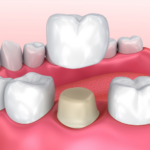6 Advantages and Disadvantages of Amalgam Fillings

The significance of amalgam fillings has dated back in the early nineteenth century. This was due to its durability and relatively low cost in the mixture of materials, such as tin, silver and copper with small traces of mercury and zinc.
This combination of metals has been known to be ideal for cavity filling, particularly within the molars as it can withstand a great deal of wear and tear.
However, there are certain concerns regarding the use of amalgam fillings which have raised awareness among citizens and health enthusiasts alike. To determine the positive or negative impact of using this material, a number of pros and cons of amalgam fillings are presented here.
Advantages of Amalgam Fillings
1. Not an Expensive Option
According to those who have tried and tested this type of material, it is not expensive to consider. In fact, this is a cost-effective form of filling that could be ideal for many uses, mainly in covering decayed portions of a tooth.
2. Durable Type of Material
The combination of robust components have made this a very durable material that can take considerable amounts of wear and tear. Most of these fillings can last to about ten or twelve years before they would require replacement.
Disadvantages of Amalgam Fillings
1. Causes Sensitive Teeth
Many reports have claimed the increase in sensitivity to the teeth when this option was considered. This was linked to the possibility that the metal could have reacted to varied temperatures that have resulted to its expansion or shrinkage.
2. Discoloration of Teeth
Over time, issues related to appearance of some fillings have caused for certain concerns. This was due to the fact that they often come in silver color and will eventually darken. For this reason, such fillings are often installed at the back of the mouth where they can be hidden.
3. Invasive Procedure that Can Weaken Teeth
The process of installing amalgam fillings has involved the removal of some tissues of the tooth. Thus, this can only mean that the remaining teeth can be damaged or weakened as the areas where the fillings are applied will be drilled.
4. Stain Removal Might Require Anesthetic
Teeth can get stains particularly around the fillings which will require tooth stain removal procedure. This process might involve air abrasion which can’t be done when the fillings are there.
This can be either be done by cleaning the cavity first or by removing the filling so that the process can be done successfully. Hence, the person might not be able to withstand the pain that comes when doing either removing the filling or cleaning the cavity, so he or she will require anesthetic for this process.
The durability of amalgam fillings is well-known as they can last longer compared with any other alternative. Nevertheless, such are considered a dated form of filling in comparison to other more developed products that are considered less noticeable.
In the end, it is up to you to decide if this option should be reasonable enough or otherwise.














Leave a Reply